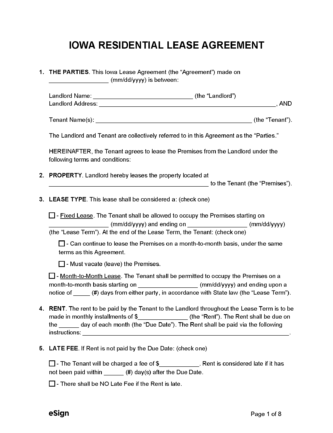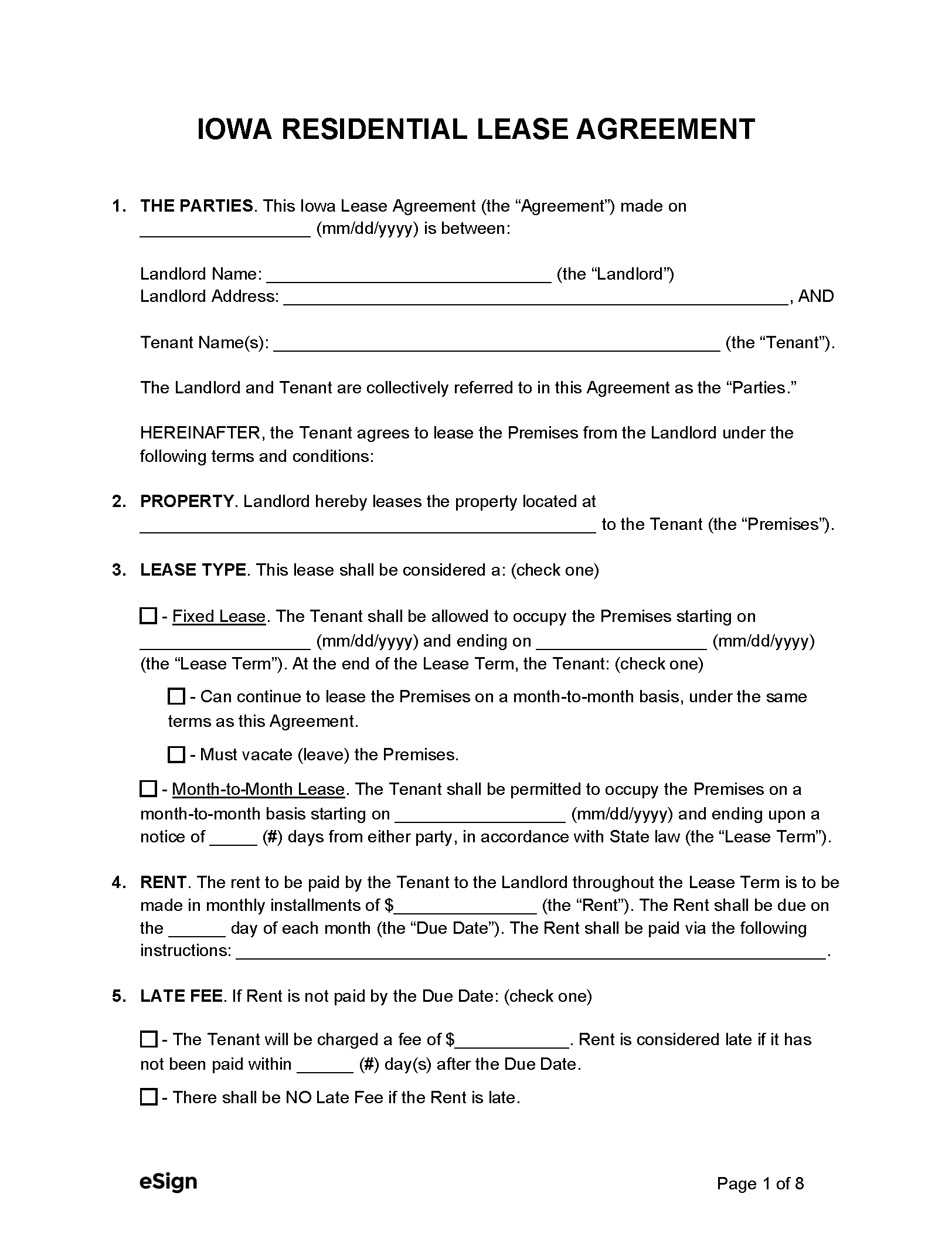
An Iowa lease agreement i s a document that establishes a residential or commercial rental arrangement between a landlord and a tenant. A lease will include a description of the rental property, the duration of the contract, the rental price, and how utilities are handled. Both parties must sign the document for it to be valid and legally binding.
An Iowa lease agreement i s a document that establishes a residential or commercial rental arrangement between a landlord and a tenant. A lease will include a description of the rental property, the duration of the contract, the rental price, and how utilities are handled. Both parties must sign the document for it to be valid and legally binding.
PDF Download
An Iowa lease agreement i s a document that establishes a residential or commercial rental arrangement between a landlord and a tenant. A lease will include a description of the rental property, the duration of the contract, the rental price, and how utilities are handled. Both parties must sign the document for it to be valid and legally binding.
4.7 | 3 Ratings Downloads: 941
Rental Application – This form is used by landlords of residential property to collect information on potential tenants in order to determine their eligibility for tenancy.
Maximum Amount ($) – The maximum security deposit is the equivalent of two months’ rent. [5]
Collecting Interest – Interest on security deposits is permitted but not required. Any interest collected in the first five years of the tenancy will be the landlord’s property. [6]
Returning to Tenant – The landlord must return the security deposit to the tenant within 30 days from the termination of the tenancy . [7]
Itemized List Required? – Yes, the landlord must provide the tenant with an itemized list explaining any deductions made to their security deposit.
Separate Bank Account? – Yes, security deposits must be held in a separate bank account and cannot be combined with the landlord’s personal funds.
General Access – The landlord must give the tenant 24 hours’ notice before entering the premises. [8]
Immediate Access – The landlord may enter a rental unit without providing notice if there’s an emergency. [9]
Grace Period – Tenants don’t need to be given a grace period to pay rent after its due date.
Maximum Late Fees ($) – The maximum late fees that landlords may demand are $12 per day if the monthly rent is $700 or less, or $20 per day if the rent is more than $700. [10]
Withholding Rent – The tenant may recover damages caused by the landlord’s failure to fulfill obligations that affect the tenant’s health and safety. [11]
Non-Payment of Rent – A 3-Day Notice to Quit for Non-Payment can be served on tenants who are late paying their rent. [12]
Non-Compliance – Tenants who break the terms of their lease are entitled to a 7-day notice to fix their violation. [13]
Tenant Maintenance – The landlord can charge the tenant for any repairs, replacements, or cleaning they caused and failed to remedy. [14]
Lockouts – The landlord cannot take possession of the tenant’s rental unit by changing the locks or cutting off services. [15]
Leaving Before the End Date – If the lease requires the tenant to give notice for extended absences, the landlord may hold them liable for damages if they abandon the property without notice. [16]
Month-to-Month Tenancy – Landlords must give month-to-month tenants a 30-Day Notice to Terminate before ending their lease agreement. [17]
Unclaimed Property – When the landlord takes possession of a rental unit following an eviction, they can claim any belongings the tenant left behind. [18]